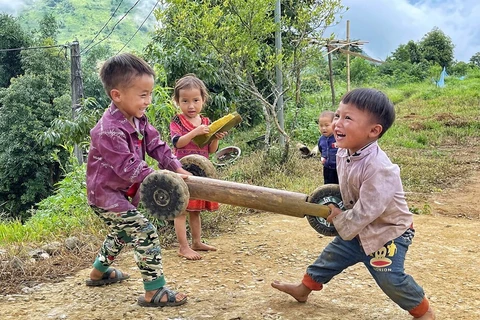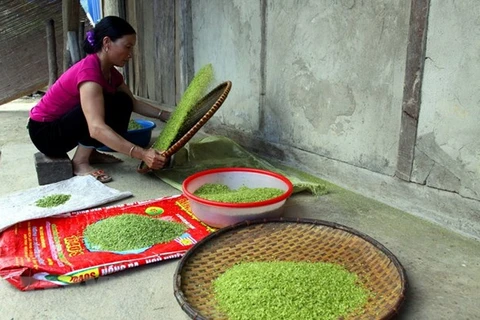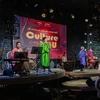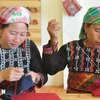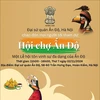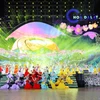Hanoi (VNA) - Those who have a chance to taste the five-coloured sticky rice will come to appreciate the special fragrance of the leaves that give the dish its colour, and the grains that give it its unique flavour. The dish is found only in the Northwest region of Vietnam, intertwined with family generations in the region.
The Northwest region is famous for various cuisines, but standing out among them is the five-coloured sticky rice.
This special cuisine contains the culinary hues of white, purple, green, yellow and red. The dish marks special occasions in Vietnam, such as new year celebrations, weddings and death anniversaries.
Special meaning of five-coloured sticky rice
The delicious cuisine is appealing to the eyes and holds significant meaning. People in the Northwest believe that the colours represent the five elements. The dish brings together friends and family, hinting at good fortune and close relationships.
Red represents a desire to live and dream of a bright future.
Purple indicates lustrous land, which ethnic people in the north believe is a precious thing in need of preservation and development.
Yellow symbolises wealth and prosperity, reflecting wishes for a peaceful and happy life. The green colour represents forests in the Northwest region, trees and paddy fields.
White sticky rice symbolises pure and faithful love. It also expresses the sentiment and respect for parents.
The dish is usually presented in the shape of a flower with five petals, as a way to show affection and respect for parents, grandparents and ancestors.
How to cook five-coloured sticky rice
The ingredients include sticky rice and leaves, which will be used as to generate the beautiful colors.
Although the dish is simple to make and similar to cooking regular sticky rice, the process requires great meticulousness. Therefore, it has links to the delicacy of women in the Northwest region.
A high quality variety of sticky rice must be chosen and then soaked in water for 6 and 8 hours. It will be divided into five equal portions which will be dyed in different hues using the various leaves provided by nature.
The colour red will be from gac fruit (scientifically known as Momordica cochinchinensis), and green come from ginger or pandan leaves. Smashed turmeric will produce the shade of yellow, while the leaves of areca trees generate the colour purple. One portion will not be dyed in order to maintain the original whiteness of sticky rice.
The dyeing process is complicated, as fruits, spice and leaves must be smashed and squeezed separately so as to avoid having their colours mix with the grain. For the same reason, they have to be prepared in different pots.
The sticky rice will be cooked after dyeing, and this stage depends greatly on the dexterity and experience of the cook.
It must be taken into account that the portions with colours that are likely to fade the most, must be cooked first. Of note, the white part needs to be placed on top so it will not be infused with other colours.
The water that is used for cooking the rice must be pure in order to ensure delectability. The Northwest region is home to creeks with clean and pure underground water to enhance flavour of dishes.
The fire must be modulated carefully when cooking so that the rice will be thoroughly and evenly cooked.
There are plenty of methods to present the dish. Some people will arrange a flower with petals in five colours, while others may place them in layers. It is colourful and captivating in many ways.
Although it is a common dish, the five-coloured sticky rice manifests the values of people in the Northwest region, in combination with numerous plants, root vegetables and fruit.
Women from the Northwest have learned through generations how to choose the right type of sticky rice, how to dye and cook it, as well as the perfect amount of fire and heat. The process is part of a woman’s connection to a parcel of land to build homes in the future. The legacy ensures the dish will continue to live on for future generations./.



